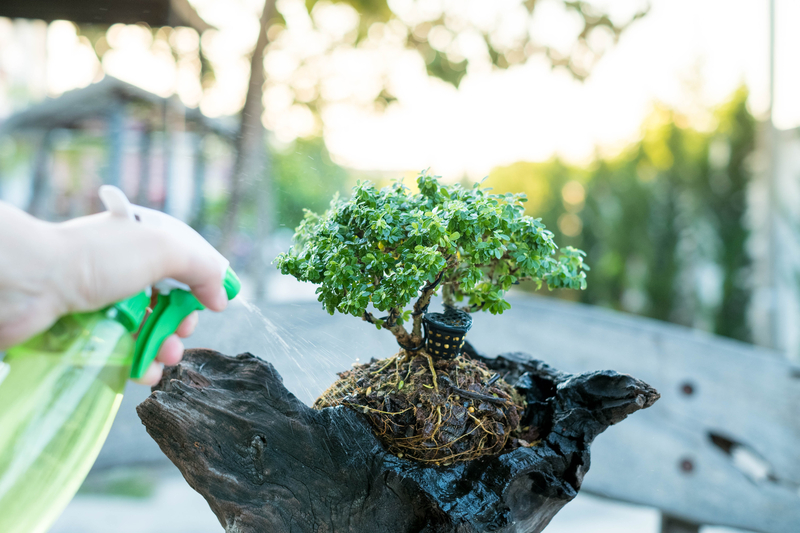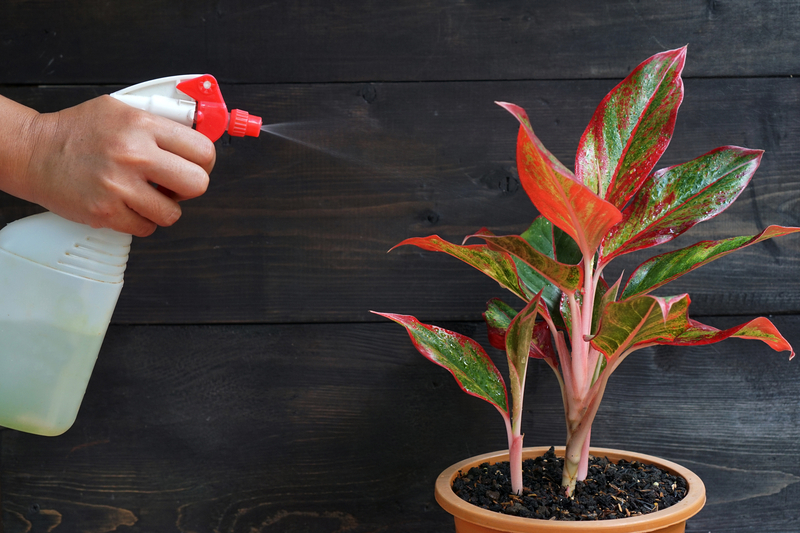Should I mist my houseplants? It’s one of the most common debates from plant owners if it is an effective technique. Does humidity play a factor in a misting decision? Here is a breakdown of reasons to mist a plant, why you shouldn’t mist a plant, and more!
What Does Mist Do for Houseplants?
Some houseplants tend to welcome humid environments. For example, ferns grow very well in hot climates in a house, like being in a bathroom with a hot shower running. Misting might be a good option if that is the case with the plants that you have because the mist provides humidity.
Why Mist a Plant?
Misting can help reduce the risk of overwatering a plant. New plant owners may overwater their plants without realizing it, especially if the water starts collecting at the bottom of a pot. Misting a plant can reduce that excess water in a jar for a plant from the traditional bottom water method.
How Often Should You be Misting Plants?
A misting schedule dramatically depends on the humidity of a plant’s environment. For example, a plant under an air conditioner or cool window will need more misting from you than a plant that lives in a bathroom with a shower. The plant that lives in the bathroom with a shower will receive more natural misting due to the humidity from a hot shower or bath.
You can monitor the amount of humidity in your house using a device called a hygrometer. It will help you keep track of the temperature of the air in your home. Depending on the temperature, you will need to use a humidifier to increase humidity or use a spray bottle frequently throughout the day.
Finally, monitor your plant’s leaves to ensure they are not turning yellow, brown, or curling around the edges. Turning a different color is a sign that the plant needs more humidity. If you start to notice these signs on the leaves, you can mist them more often to bring the plant back to its original healthy way.
What Type of Water Works Best for Misting?
Warm water is best to use when misting a plant. Again, you are trying to mimic these plants’ hot and humid environment, so the warm water creates extra humidity. Rainwater or filtered water also works best when misting a plant.
What Plants Like Misting?
Plants that are common to the tropics love misting. Some plants include air plants, arrowhead plants, ferns, rubber plants, zebra plants, and more.
Misting Concerns
Over misting is a problem when it comes to misting a plant. Sometimes you won’t realize how much water a plant is retaining when you mist, so make sure you check the soil often One rule of thumb is to check about an inch to an inch and a half down the soil to see if it is wet. If it is wet, you can hold off on misting the plant.
Not only can too much water be bad for a plant, but the extra water can cause fungus. In addition to fungus on a plant, having excess moisture can attract bugs and other pets.
Finally, not all plants enjoy misting. The easy rule of thumb is that anything fuzzy won’t enjoy misting, so stick to a traditional way to water those types of plants.
Using a Humidifier
While misting can create extra humidity, some people start using a humidifier to fix dry air in a room, especially when they have an AC running during the summer. When you run an AC unit, you are removing heat and moisture from the air. When you do that, you are lowering the amount of moisture there is for a plant.
To counter this, people tend to run a humidifier to create extra moisture in the air for plants when they run an AC. While a humidifier is a good idea to get additional moisture in the air, you shouldn’t leave it on for too long. Leaving a humidifier on for too long can create mold and or root rot in the plant.
Another negative of a humidifier is harming other plants that don’t do well in hot environments. To avoid this, you should only allow a humidifier in a room with plants that require misting while keeping a separate plant in another room. Also, make sure that you have drainage holes in the bottom of the pot.
Conclusion – Should Houseplants Be Misted
In summary, misting a houseplant is a good idea if you have a plant or plants that require extra humidity. For example, a typical house will have its humidity around 30-50%, but tropical plants enjoy environments around 70. Using misting and or a humidifier can be a great way to achieve that desired humidity for a plant.
Also, you can invest in a moisture, light, and PH reader to promote better plant living in your home. Getting this device can help you better understand your plant’s environment and what they need to grow better.
Similar Posts:
How to Take Care of a Bird’s Nest Fern
How to Take Care of a Coffee Plant
How to Take Care of a Croton Plant
How to Take Care of a an African Violet Plant
How to Take Care of a Rubber Plant
How to Get Rid of Bugs on Houseplants
Should Indoor Houseplants Be Rotated?
How Often Should Houseplants Be Fertilized?
Should Houseplants Be Watered from the Top or Bottom?


